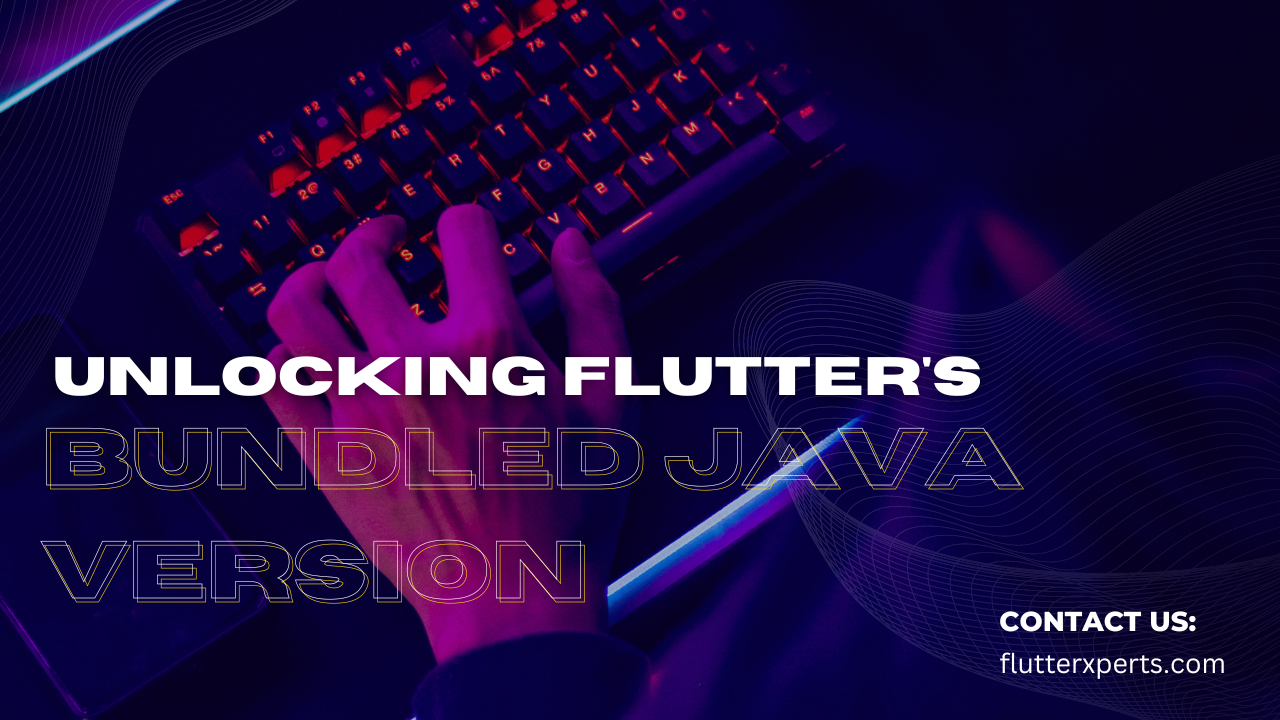Troubleshooting Guide: How to Find the Bundled Java Version on Flutter
Introduction
Flutter is a popular framework for developing cross-platform mobile applications. It provides a rich set of features and libraries that simplify the app development process. However, when working with Flutter, it’s essential to understand and manage the bundled Java version. This guide will help you troubleshoot and locate the bundled Java version in your Flutter environment.
What is a Bundled Java Version in Flutter?
Before diving into troubleshooting, let’s understand what a bundled Java version means in the context of Flutter. When you install Flutter, it includes a pre-packaged Java Development Kit (JDK) that is required for Android app development. This bundled JDK ensures that Flutter apps can be compiled and run on Android devices seamlessly.
Why is it Important to Find the Bundled Java Version?
Finding the bundled Java version is crucial for various reasons. Firstly, knowing the specific JDK version used by Flutter helps ensure compatibility with the Android platform and related libraries. Secondly, troubleshooting certain issues in Flutter projects often requires knowledge of the underlying JDK version. Therefore, locating the bundled Java version is a fundamental step for maintaining a stable and productive development environment.
Troubleshooting: Unable to Locate the Bundled Java Version
If you’re unable to find the bundled Java version in your Flutter setup, don’t worry. Follow these troubleshooting steps to identify the Java version:
a) Checking the Flutter SDK Installation
- Ensure that you have the latest Flutter SDK installed on your system.
- Open a terminal or command prompt and run the following command:
flutter doctor
This command provides information about your Flutter installation, including the bundled Java version.
b) Verifying the System Path Environment Variable
- Check if the system Path environment variable is properly configured to include the Flutter SDK location.
- Open a terminal or command prompt and run the following command:
echo $PATH
Ensure that the Flutter SDK path is included in the output.
c) Inspecting Flutter Project Configuration
- Open your Flutter project in a code editor.
- Look for the
androidfolder and navigate to theappdirectory. - Inside the
appdirectory, locate thebuild.gradlefile. - Open the
build.gradlefile and search for thecompileOptionssection. - Within
compileOptions, you’ll find thesourceCompatibilityandtargetCompatibilitysettings. These indicate the Java version used by the project.
d) Exploring Platform-Specific Requirements
- Flutter projects often have platform-specific requirements, such as additional Java dependencies or configuration files.
- Consult the official Flutter documentation or relevant resources specific to your project’s target platform (e.g., Android) for any specific instructions on locating the bundled Java version.
Alternative Methods to Identify the Bundled Java Version
If the troubleshooting steps mentioned above do not yield the desired results, you can try alternative methods to identify the bundled Java version in Flutter:
a) Using Flutter Doctor Command
- Open a terminal or command prompt.
- Run the following command:
flutter doctor --verbose
This command provides detailed information about your Flutter installation, including the bundled Java version.
b) Checking the Flutter SDK Release Notes
- Visit the Flutter SDK release notes on the official Flutter website.
- Look for the release notes related to your installed version of Flutter.
- Check if any specific information regarding the bundled Java version is mentioned.
c) Reviewing the Flutter Project Files
- Go through the project files in your Flutter project, such as
pubspec.yaml,android/gradle.properties, or any other relevant files. - Look for any references to the Java version or related configuration that might indicate the bundled Java version.
Best Practices for Managing Flutter’s Bundled Java Version
To ensure a smooth development experience with Flutter, consider the following best practices for managing the bundled Java version:
a) Keeping the Flutter SDK Updated
Regularly update your Flutter SDK to the latest stable version. This ensures that you have access to the most recent improvements, bug fixes, and bundled Java version updates.
b) Handling Java Version Conflicts
If you work on multiple projects with different Java version requirements, you may encounter version conflicts. In such cases, use version managers like Jabba, SDKMAN, or similar tools to switch between Java versions conveniently.
c) Utilizing Version Managers
Consider utilizing version managers not only for managing Java versions but also for Flutter SDK and related tools. Version managers simplify the process of switching between different versions, making it easier to handle projects with specific requirements.
Conclusion
Locating the bundled Java version in your Flutter development environment is essential for maintaining compatibility and troubleshooting issues. By following the troubleshooting steps and alternative methods outlined in this guide, you can easily identify the bundled Java version and ensure a smooth Flutter app development experience.
FAQs (Frequently Asked Questions)
- Q: How do I update the Flutter SDK to the latest version?
- A: To update the Flutter SDK, open a terminal or command prompt and run the following command:
flutter upgrade. This command updates your Flutter installation to the latest stable version.
- A: To update the Flutter SDK, open a terminal or command prompt and run the following command:
- Q: Can I use a different Java version than the bundled one in Flutter?
- A: While it’s recommended to use the bundled Java version for Flutter, you can configure your Flutter project to use a different Java version if needed. However, this may require additional configuration and might introduce compatibility issues.


